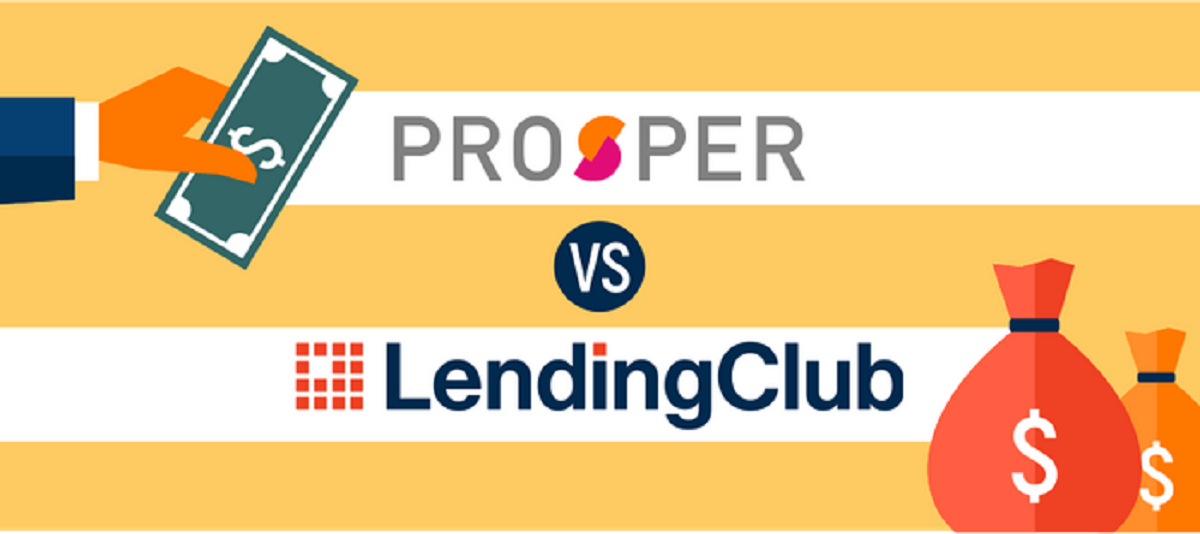Introduction
Welcome to our comprehensive guide on how to borrow against investments. Are you in need of some extra cash but don’t want to liquidate your investments? Borrowing against your investments can be a viable solution. This financial strategy allows you to access funds without selling your stocks, bonds, exchange-traded funds (ETFs), or other investments.
By opting for this approach, you can tap into your investment portfolio’s value, while potentially avoiding the tax consequences and market risks associated with selling. Whether you’re looking to fund a major purchase, consolidate debt, or invest in a new venture, borrowing against investments can offer flexibility and convenience.
In this guide, we will explore the various aspects of borrowing against investments, including the benefits and risks involved, the types of investments that can be used as collateral, the loan approval process, interest rates and terms, repayment options, and alternative borrowing options. Armed with this information, you’ll be better equipped to make informed decisions about whether this financial strategy is suitable for your unique circumstances.
It’s important to note that while borrowing against investments can be advantageous, it may not be the right choice for everyone. Before proceeding, it is advised to consult with a financial advisor to determine if this strategy aligns with your financial goals and risk tolerance.
So, if you’re ready to delve into the world of borrowing against investments, let’s get started!
Understanding Borrowing Against Investments
Borrowing against investments, also known as securities-based lending or portfolio-based lending, is a financial strategy that allows individuals to use their investment holdings as collateral to secure a loan. Instead of selling their investments to raise cash, borrowers can leverage the value of their portfolio to obtain funds from a lender.
With this approach, the borrower retains ownership of their investments while accessing the immediate liquidity they need. The loan amount is typically determined by a percentage of the value of the collateralized investments, often ranging from 50% to 90% of the value.
The borrowed funds can be used for various purposes, such as purchasing real estate, paying off high-interest debt, financing business ventures, or covering personal expenses. By utilizing their investments as collateral, borrowers can access significant amounts of capital quickly and conveniently.
It is important to note that not all investment types can be used as collateral for these loans. Generally, lenders accept assets such as stocks, bonds, mutual funds, ETFs, and other publicly traded securities. The eligibility of specific investments may vary between lenders, so it’s essential to discuss this with your chosen financial institution or advisor.
When considering borrowing against investments, it is crucial to have a clear understanding of the risks and benefits involved. While this strategy can provide valuable liquidity, it comes with certain risks that borrowers should carefully assess.
Let’s explore the benefits and risks of borrowing against investments in the following sections to help you make an informed decision.
Benefits of Borrowing Against Investments
Borrowing against investments offers a range of potential benefits for individuals looking to access funds while retaining ownership of their investment portfolio. Here are some key advantages to consider:
- Preservation of Investment Strategy: By borrowing against investments, you can maintain the long-term investment strategy you’ve established. Instead of selling your investments and potentially missing out on future market gains, you can hold onto your assets and continue to benefit from potential growth.
- Avoidance of Capital Gains Taxes: Selling investments typically triggers capital gains taxes on any profits earned. However, when you borrow against your investments, you are not selling them, which means you can potentially defer or avoid capital gains taxes altogether.
- Access to Liquidity: Borrowing against investments provides an immediate and flexible source of liquidity. Whether you need funds for a significant purchase, unexpected expenses, or investment opportunities, you can access the cash you need without liquidating your assets.
- Lower Interest Rates: Borrowing against investments often comes with lower interest rates compared to other forms of borrowing, such as unsecured personal loans or credit cards. The collateralized nature of the loan mitigates risk for the lender, resulting in potentially more favorable borrowing terms for the borrower.
- Quick Approval Process: Compared to traditional lending options, borrowing against investments typically involves a simplified approval process. Since the primary focus is the value of the collateralized investments rather than the borrower’s creditworthiness, loans can be approved and funded relatively quickly.
It’s important to note that while these benefits can be advantageous, they are contingent upon the specific terms offered by the lender and the performance of the collateralized investments. It is crucial to carefully review all loan agreements, interest rates, and terms to ensure they align with your financial goals and risk tolerance.
Risks of Borrowing Against Investments
While borrowing against investments can provide valuable liquidity, it is important to be aware of the potential risks involved. Understanding these risks will help you make an informed decision before proceeding with this financial strategy. Here are some key risks to consider:
- Value Fluctuations: The value of your investment collateral can fluctuate, sometimes significantly, due to market conditions, economic factors, or other events. If the value declines below a certain threshold, it may trigger a margin call from the lender, requiring you to either repay a portion of the loan or provide additional collateral.
- Loss of Potential Gains: By leveraging your investments, you may miss out on potential gains if the market performs well. If the value of your collateralized assets increases, you will only benefit from the appreciation up to the percentage of the loan amount. The remaining value is held as collateral, limiting your potential returns.
- Liquidation Risk: In the event of a significant drop in the value of your investments, the lender may require you to sell a portion of your collateral to reduce the loan-to-value ratio. Forced liquidation of investments can result in potential losses and cause you to deviate from your long-term investment strategy.
- Interest Costs: Borrowing against investments incurs interest charges that can accumulate over time. It is crucial to consider the interest rates and repayment terms offered by the lender to ensure that the cost of borrowing is manageable and aligns with your financial goals.
- Personal Liability: In some cases, if the value of your collateralized assets is not sufficient to cover the outstanding loan balance, you may be personally liable for the remaining debt. It is essential to understand the potential consequences and ensure that you have a plan in place to handle such situations.
It is important to carefully consider your risk tolerance, financial situation, and long-term goals before deciding to borrow against investments. Assessing these risks will help you determine if this strategy aligns with your overall investment strategy and if you have the ability to repay the loan should market conditions become unfavorable.
Types of Investments that Can Be Used as Collateral
When it comes to borrowing against investments, not all types of investments can be used as collateral. Lenders have specific criteria for the types of assets they accept as collateral. Here are some common investment types that can typically be used as collateral:
- Stocks: Shares of publicly traded companies can often serve as collateral. Lenders may consider blue-chip stocks, large-cap stocks, or stocks listed on major stock exchanges as acceptable collateral.
- Bonds: Government bonds, corporate bonds, municipal bonds, and other fixed-income securities can be used as collateral. The value of the bonds and their creditworthiness will be considered during the loan evaluation process.
- Mutual Funds: Many lenders accept mutual funds as collateral, particularly those with a diversified portfolio and a good track record. The net asset value (NAV) of the fund is usually the basis for evaluating its suitability as collateral.
- Exchange-Traded Funds (ETFs): These investment vehicles, which trade on stock exchanges, are often eligible for collateral. Similar to mutual funds, the lender will consider the underlying assets and performance of the ETF when evaluating its suitability.
- Certificates of Deposit (CDs): CDs are time deposits that offer a fixed interest rate and maturity date. Some lenders accept CDs as collateral, as the terms and conditions of these investments offer a level of security.
It is important to note that the eligibility of specific investments as collateral may vary between lenders. Some lenders may have restrictive policies or only accept certain types of investments. It is advisable to consult with your chosen lender or financial advisor to determine which investments are acceptable collateral.
Furthermore, the percentage of the investment’s value that can be borrowed may also vary. Lenders usually provide a loan-to-value (LTV) ratio, which determines the maximum amount that can be borrowed against the collateralized investments. LTV ratios typically range from 50% to 90%.
Before proceeding with borrowing against investments, ensure that your chosen investments meet the lender’s criteria and carefully consider the potential risks and implications for your investment portfolio.
Eligibility Criteria and Loan Approval Process
Eligibility criteria and the loan approval process for borrowing against investments can vary depending on the lender and the specific terms of the loan. However, there are some general criteria that borrowers should consider when seeking this type of financing:
- Investment Portfolio Value: The value of your investment portfolio is a crucial factor in determining eligibility. Lenders typically require a minimum portfolio value to qualify for a securities-based loan. The specific threshold may vary between lenders.
- Type of Investments: As discussed earlier, not all investment types can be used as collateral. Lenders have specific criteria for the types of assets they accept. Ensure that your investment holdings align with the lender’s requirements.
- Loan-to-Value (LTV) Ratio: Lenders will evaluate the loan-to-value ratio, which is the percentage of the investment’s value that can be borrowed. The higher the LTV, the greater the loan amount you can access. However, a higher LTV may come with stricter requirements and possibly higher interest rates.
- Creditworthiness: While the creditworthiness of borrowers may be a less critical factor in securities-based lending compared to traditional loans, lenders may still consider an applicant’s credit history and overall financial stability. This information can influence the interest rates and terms offered.
- Collateral Evaluation: Lenders will assess the quality, liquidity, and marketability of the investment collateral. The performance, volatility, and diversification of the assets will impact the loan approval decision and the terms offered.
The loan approval process for borrowing against investments is typically streamlined compared to traditional lending options. The process may involve the following steps:
- Application: You will need to submit an application with the lender, providing information about your investment holdings, portfolio value, and financial situation. The lender may also require documentation related to your investments.
- Collateral Evaluation: The lender will evaluate the investment collateral to determine its value, marketability, and potential risks. This assessment helps determine the loan amount and terms offered.
- Loan Approval: Once the lender has reviewed your application and collateral, they will make a loan approval decision. If approved, you will receive the loan offer outlining the terms, interest rates, and repayment options.
- Loan Agreement: If you accept the loan offer, you will need to sign a loan agreement that outlines the terms and conditions of the loan, including repayment terms, interest rates, and any fees associated with the loan.
- Funding: After signing the loan agreement, the lender will disburse the funds to your designated account, providing you with the liquidity you need.
It is important to carefully review all loan terms and seek clarification if you have any questions or concerns. Understanding the eligibility criteria and loan approval process will help you navigate the borrowing process more effectively.
Interest Rates and Terms for Borrowing Against Investments
When considering borrowing against investments, it is essential to understand the interest rates and terms associated with this type of loan. While the specific rates and terms can vary between lenders, here are some key factors to consider:
- Interest Rates: The interest rates for borrowing against investments are generally lower compared to other types of loans, such as personal loans or credit cards. The rates offered by lenders can vary based on factors such as the borrower’s creditworthiness, the loan-to-value (LTV) ratio, and prevailing market conditions. It is advisable to compare rates from different lenders to secure the most favorable terms.
- Loan-to-Value (LTV) Ratio: The LTV ratio determines the maximum loan amount you can borrow against your investment collateral. Typically, the higher the LTV ratio, the lower the interest rates offered. However, a higher LTV ratio may also come with stricter eligibility criteria and increased risk for the borrower.
- Loan Duration: The loan duration, also known as the term, represents the length of time you have to repay the borrowed amount. Lenders may offer various term options, ranging from several months to several years. It is important to consider your financial circumstances and repayment capabilities when selecting the loan duration.
- Repayment Options: Lenders may offer different repayment options for borrowing against investments. Common repayment options include regular monthly installment payments or interest-only payments with a balloon payment at the end of the loan term. It is crucial to understand the repayment structure and select the option that aligns with your financial goals.
- Additional Fees: In addition to interest rates, borrowers should also consider any additional fees associated with the loan. These may include origination fees, account maintenance fees, or early repayment penalties. It is vital to review the loan agreement and discuss any potential fees with the lender.
It is important to note that the rates and terms for borrowing against investments are negotiable to some extent. As a borrower, you have the opportunity to discuss and potentially negotiate the terms with the lender. However, the negotiation power may vary depending on your financial profile and the lender’s policies.
Prior to committing to a loan, it is crucial to carefully evaluate the interest rates, terms, and fees offered by different lenders. By comparing multiple loan offers, you can secure the most favorable borrowing terms that align with your financial goals and repayment capabilities.
Repayment Options
When borrowing against investments, borrowers typically have various repayment options that can be tailored to their financial circumstances and objectives. Understanding the available repayment options is crucial in managing the loan effectively. Here are some common repayment options to consider:
- Amortized Installment Payments: With this repayment option, borrowers make equal monthly installment payments over a specified period. Each payment includes a portion of the principal amount borrowed and the accrued interest. By the end of the loan term, the entire balance is repaid.
- Interest-Only Payments: With this option, borrowers are only required to make monthly payments covering the accrued interest on the loan. The principal amount borrowed remains unchanged. This option can provide lower monthly payments, but it is important to note that the principal balance will need to be repaid in full at the end of the loan term.
- Balloon Payment: In some cases, borrowers may opt for a balloon payment structure, where they make regular monthly payments covering only the interest accrued. At the end of the loan term, a large lump sum, the balloon payment, is due to pay off the principal balance in full.
- Customized Repayment Plans: Some lenders may offer flexible repayment options that can be customized based on the borrower’s preferences and financial situation. This may include the ability to make additional principal payments or adjust the repayment schedule to align with changes in income or financial goals.
It is important to carefully evaluate the available repayment options and consider your financial capabilities and goals when selecting the most suitable option. Consider factors such as your income, budget, and overall financial stability.
Before committing to a specific repayment option, borrowers should also inquire about any potential prepayment penalties or fees associated with early repayment. Understanding the terms and conditions will enable you to make informed decisions and avoid any unexpected costs.
Remember, selecting the right repayment option is crucial to meet your financial obligations while managing your investment portfolio effectively. Consult with your lender to explore the available options and determine the repayment plan that aligns with your needs and preferences.
Choosing the Right Lender
When considering borrowing against investments, selecting the right lender is essential to ensure a smooth borrowing experience and favorable terms. Here are some key factors to consider when choosing a lender:
- Reputation and Credibility: Research the lender’s reputation and credibility in the industry. Look for reviews, testimonials, and recommendations from other borrowers. A reputable lender will have transparent terms, excellent customer service, and a track record of integrity and reliability.
- Experience and Specialization: Consider the lender’s experience and specialization in securities-based lending. Lenders with expertise in this niche are more likely to understand the unique needs and challenges of borrowers seeking to leverage their investment portfolios.
- Loan Terms and Interest Rates: Compare the loan terms and interest rates offered by different lenders. Seek lenders that provide competitive rates and flexible terms that align with your financial goals and repayment abilities.
- Loan-to-Value (LTV) Ratio: Evaluate the LTV ratio offered by each lender. A higher LTV ratio allows you to borrow a larger percentage of the value of your investments, which can be advantageous if you require a larger loan amount.
- Fees and Additional Charges: Inquire about any fees or additional charges associated with the loan. These may include origination fees, account maintenance fees, or early repayment penalties. Understanding the potential costs involved will help you assess the true affordability of the loan.
- Customer Service and Support: Assess the lender’s customer service and support. A responsive and helpful customer service team can provide guidance throughout the borrowing process and address any concerns or questions that may arise.
- Flexibility and Customization: Consider the lender’s flexibility in offering customized loan terms or repayment plans. The ability to tailor the loan to your specific needs and financial situation can enhance your borrowing experience and ensure long-term financial stability.
It is also beneficial to consult with a financial advisor or seek recommendations from trusted professionals in the industry. They can provide insights and guidance on reputable lenders and help you make an informed decision based on your unique financial circumstances.
Remember, choosing the right lender is crucial to finding the most favorable terms and ensuring a positive borrowing experience. Take the time to compare lenders, review their policies, and carefully evaluate their offerings before making a final decision.
Alternative Options to Borrowing Against Investments
While borrowing against investments can be a viable option for accessing funds, it is important to explore alternative borrowing options that may better suit your needs. Here are some alternatives to consider:
- Personal Loans: If you have a good credit score, you may qualify for an unsecured personal loan. Personal loans offer flexibility in terms of usage and repayment options, and they do not require collateral.
- Home Equity Loans or Lines of Credit: If you own a home, you can leverage its equity through a home equity loan or a line of credit. These options offer competitive interest rates, and the interest payments may be tax-deductible in some cases. However, keep in mind that your home is used as collateral, so the risk of foreclosure exists if you default on the loan.
- Credit Cards: Credit cards can be a convenient source of short-term financing. They offer flexibility and quick access to funds. However, keep in mind that credit cards typically have higher interest rates compared to other borrowing options. Responsible usage and timely repayment are crucial to avoid excessive debt.
- Peer-to-Peer Lending: Peer-to-peer lending platforms connect borrowers directly with individual lenders. These platforms may offer competitive rates and flexible repayment options. However, they usually require a good credit history and may involve additional fees.
- 401(k) Loan: If you have a 401(k) retirement account, some plans allow you to borrow from it. These loans are typically low interest and have flexible repayment terms. However, withdrawing from your retirement savings has the potential to impact your long-term financial well-being.
It is important to carefully weigh the advantages and disadvantages of each alternative option. Consider factors such as interest rates, fees, repayment terms, and the impact on your overall financial situation.
Additionally, before deciding on any alternative borrowing option, consult with a financial advisor to determine which option aligns best with your specific needs, long-term goals, and risk tolerance.
Remember, each individual’s financial situation is unique, and the best alternative option will depend on a variety of factors. Choose the option that offers the most favorable terms, fits your borrowing requirements, and aligns with your long-term financial strategy.
Conclusion
Borrowing against investments can be an effective strategy for accessing funds while preserving the value of your investment portfolio. It offers flexibility, convenience, and potential benefits such as tax advantages and lower interest rates. However, it is essential to carefully consider the risks involved and assess your financial situation before proceeding with this type of loan.
In this guide, we’ve explored the various aspects of borrowing against investments. We discussed the benefits, including the preservation of investment strategy, avoidance of capital gains taxes, and access to liquidity. We also highlighted the risks, such as value fluctuations, potential loss of gains, and liquidation risk. Moreover, we examined the types of investments that can be used as collateral, the eligibility criteria, loan approval process, interest rates, and repayment options.
It is important to conduct thorough research, compare lenders, and review loan terms to select the right lender and ensure favorable borrowing terms. Additionally, exploring alternative borrowing options may provide additional choices better suited to your needs.
Before making any decisions, it is advisable to consult with a financial advisor who can assess your individual situation and provide personalized guidance. They can help you determine if borrowing against investments aligns with your financial goals, risk tolerance, and long-term investment strategy.
Remember, borrowing against investments should be approached with caution and careful consideration. It can be a valuable tool, but it is crucial to make informed decisions and have a clear understanding of the potential implications for your investment portfolio and overall financial well-being.
By understanding the benefits, risks, and options available, you can make informed decisions and leverage this financial strategy effectively to meet your financial needs and objectives.

























